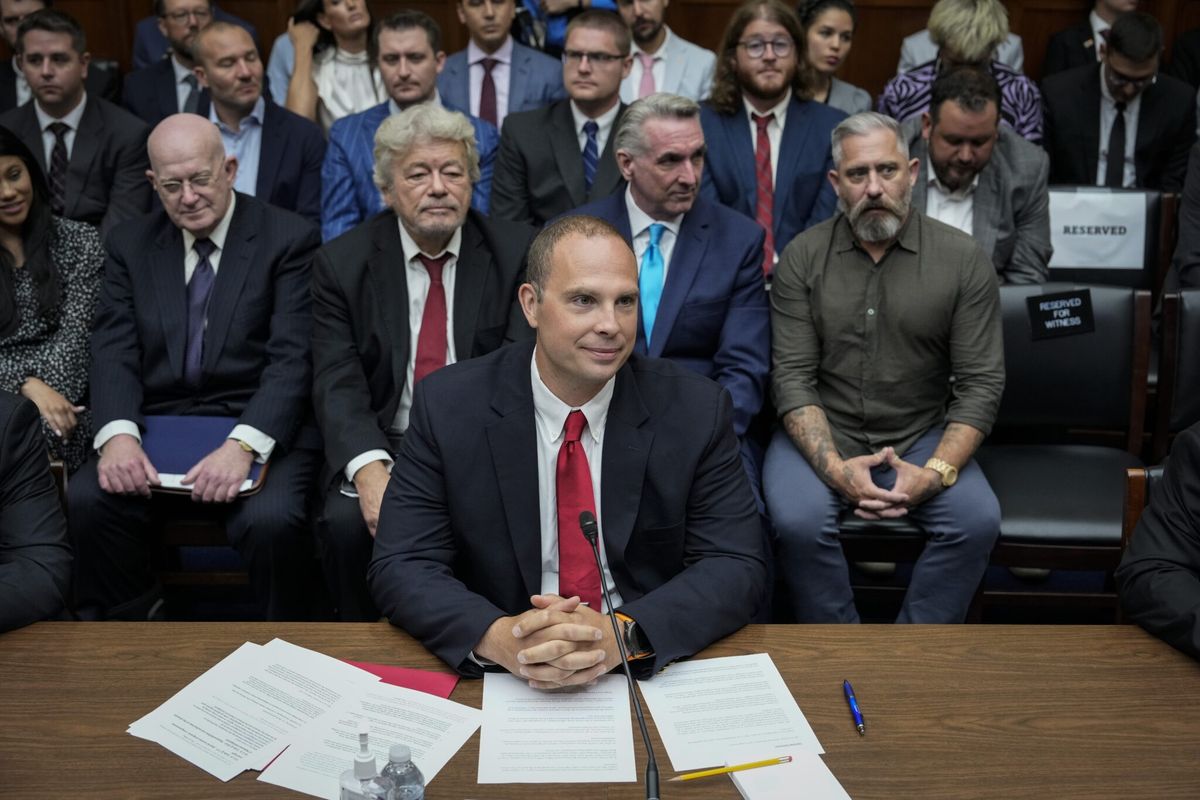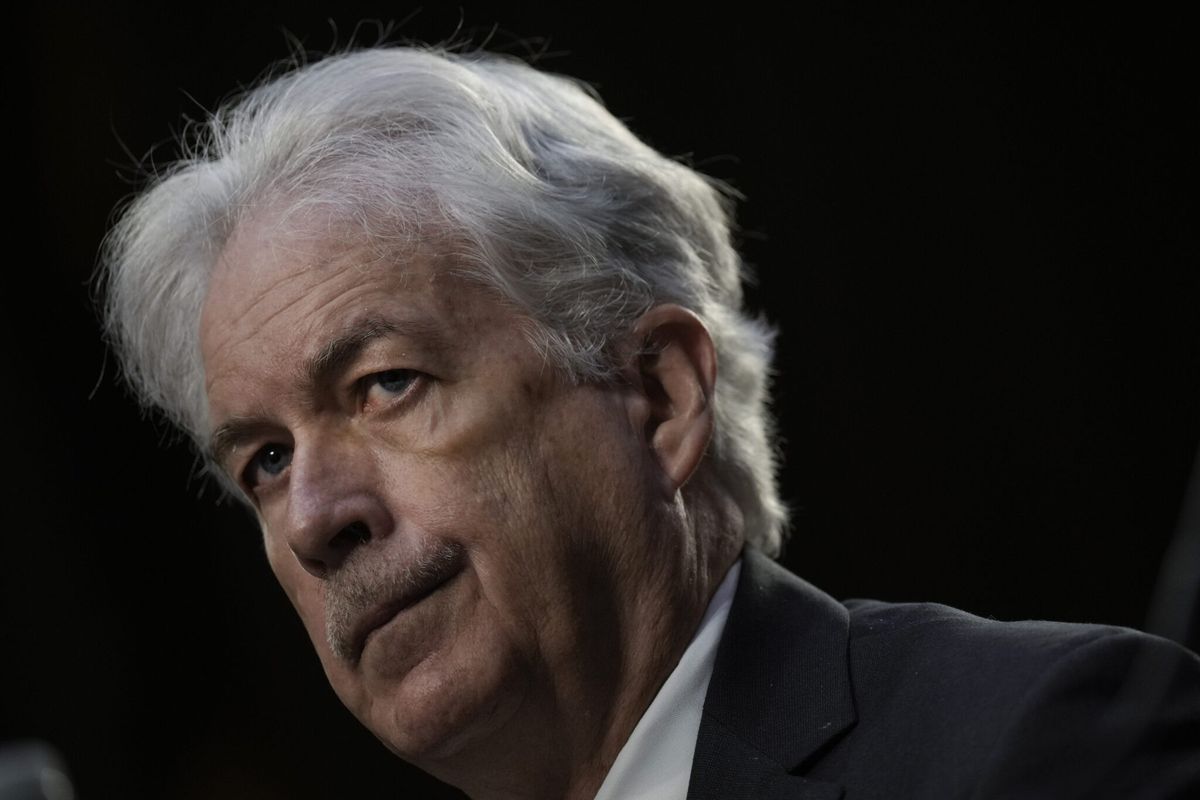OPINION — “As service chief, we all have, you know, a dual obligation to make sure that the force can do what the combatant commanders need them to do now, today. But we also have to prepare them for the future. This is the secret sauce of being a service chief. You’re doing — all the time — balancing both of those requirements.”
That was Marine Corps Commandant Gen. David H. Berger speaking last Tuesday evening at the Council on Foreign Relations. Berger was there along with the five other Service Chiefs – Gen. James McConville, chief of staff of the Army; Adm. Michael Gilday, Chief of Naval Operations; Gen. Charles “CQ” Brown, Jr., Air Force chief of staff; Gen. B. Chance Saltzman, chief of space operations of Space Command; and Adm. Linda Fagan, Commandant of the Coast Guard.
I will discuss what some of the Chiefs said about their services and other issues below, but Berger, who has drawn controversy for his reshaping the Marine Corps’ future, had earlier expanded on that subject and others during a lone appearance at the Brookings Institution, which also took place last Tuesday.
Berger described how as change was needed after two years of war games against China, as the pacing Indo-Pacific threat, “where every one [of the war games] doesn’t turn out very well for us time after time after time.”
The thinking was, Berger said, “What’s the [new] operational concept and for us [the Marines] it was we needed to be more naval, more light, more distributed, in order to deter [China] better and be able to respond faster – so the concept drove everything else … How do we fight, how do we operate more distributed, incorporating allies and partners because we are not going to be able to do it all by ourselves.”
The result was Berger’s Force Design 2030, where the focus is on sea denial forces employing small, dispersed forces operating in the littorals – the coastal regions of the island chains off the Asian mainland. Such groups could do without equipment like tanks and towed cannon and replace them with long-range, anti-ship, precision fires; medium-range to long-range air defense systems and short-range (point defense) air defense systems.
Looking for a way to get ahead of the week in cyber and tech? Sign up for the Cyber Initiatives Group Sunday newsletter to quickly get up to speed on the biggest cyber and tech headlines and be ready for the week ahead. Sign up today.
For implementation of the new ideas, Berger said, “We would not have an experimentational [Marine] unit. We chose to use the world as a laboratory, the fleet as our test forces. It’s kind of hectic when you’re doing that, but I think it’s much more realistic and you can learn a lot faster from that.”
Berger said he was confident it was working because “even if we’ve not got it completely right, we’ll learn it quickly and we’ll make adjustments in stride.” He also pointed out gains on the allies’ side with agreements recently with Japan to host a new Marine Littoral Regiment by 2025; the Philippines to set up new joint bases, and shared activities with Australia.
However, Berger made clear that the Marines had not dropped their traditional immediate- response role. He noted, “For example, Marine Expeditionary Units are out in the Pacific right now … Those are our immediate forces that are sea based. That hasn’t changed.”
“The interpretation that we were fine tuning or transforming for a single threat in a single geographic area was misplaced,” Berger said. “We’re agnostic to the theater. We know who the pacing challenge is, so it’s threat-based, no question about it.”
On the Marines taking on this new type of role, he said, “We can walk and chew gum.”
In answer to a question about learning from the Ukraine war, Berger, talked first of unmanned aircraft.
“I think the use of unmanned systems is not new, but exponential in terms of the impact of just the numbers,” he said. “l mean every single day in large numbers that is not new, but the scale of it certainly is.”
Berger also talked about local information sharing. What he said was “new for me to watch [was] the power of information at the local level and the ability to move that information almost all of it unclassified. There’s almost like an informal intelligence network at work between the people in Ukraine and their military that’s doggone near seamless. They’re moving information on un-encrypted systems at speed to make decisions inside a cycle to make decisions that’s phenomenal to watch. We should learn from that.”
Berger and other Chiefs at the Council on Foreign Relations event said they also gained a new respect for logistics based on the Ukraine fighting.
Berger explained, “We’ve had secure, reliable logistics since World War II. We haven’t needed to protect our own lines. Now we assume they will be contested.” He went on to say that logistics “can’t be a chain, it has to be a web, because we assume … that [supply] nodes will be contested. If you wanted to disrupt the U.S., you wouldn’t go symmetrically head-on-head, you’d go after the soft spots … and what you perceived logistically, that’s where I can pinch them. That’s where I can hurt them.”
The Cipher Brief hosts expert-level briefings on national security issues for Subscriber+Members that help provide context around today’s national security issues and what they mean for business. Upgrade your status to Subscriber+ today.
The solution, Berger said, is “mentally we have to take the approach of a web, not a chain. We have to have a balance of both ashore nodes and afloat and air {nodes], and this is where Transcom [U.S Transportation Command] Commander is headed. She [Air Force Gen. Jacqueline Van Ovost] clearly recognizes single points of failure not good. You need a lot of resiliency, a lot of redundancy. That will not be cheap … But we can’t go for efficiency and hope that we’re going to be resilient enough to survive the first few weeks when they are going to contest us. And I’m not talking necessarily about missiles raining down on a port, but through other means. Interdicting that supply chain can happen non-kinetically. We have to build from the networks to the nodes a web that is resilient … We cannot be fragile. We can’t.”
At the Council on Foreign Relations meeting, the Army’s Chief of Staff, Gen. McConville, said his biggest takeaway from Ukraine was “we often like to find militaries, at least from where I sit, with capabilities, capacity, and will to fight … And it starts at the top of the leadership. We’ve seen other places around the world where leadership didn’t stay … didn’t have the will to fight, and I think that’s a(n) incredible lesson for us all to take away.”
The Navy’s chief, Adm. Gilday, talked about allied militaries needing “not only the will to fight, but also a force that has the right kit and is well trained. And so that shouldn’t be lost on us with respect to Taiwan, and also the fact that, geographically, it’s a different problem set from Ukraine. It has to have this stuff [military equipment] up front. You’re not going to get it there quickly or easily after the bullets begin to fly.”
For Air Force Chief Gen. Brown, not surprisingly, air superiority was the issue. “Right now there’s contested airspace over Ukraine,” Brown said, “and the fact that the Russians don’t have air superiority and the fact that the Ukrainians are being able to actually deny them air superiority based on how they use their surface-to-air weapons systems, and to be very dynamic in how they’ve done that, to put doubt into the Russians that they don’t necessarily fly into Ukraine … And this is something that we’re going to see in the future that we, collectively, can’t take for granted, that we’ll have air superiority.”
Space Command’s Gen. Saltzman said, “The value of commercial space [company products] and bringing partnerships together and sharing information—allowing us to share information more broadly … I think that might be one of the big things that comes out of it [the Ukraine war] from our perspective.”
Council President Richard Haass raised the question of the influence of Artificial Intelligence (AI) on warfare with Chiefs.
Berger said, “We need to learn fast. We need to embrace it. We need to experiment with it, try it … It can absolutely enhance decision making—it already is right now … For tactical commanders, we all knew some years ago that you were becoming saturated with so much information that the ability to make decisions was actually getting slower—not because you didn’t have enough awareness; because you had too much. You couldn’t sort through it. So the ability to sort through that quickly and get to the key elements, figure out what they are, look at the options that make sense, those are things that, for tactical units, make absolute sense.”
McConville pointed out that in the Army “we do a lot of stuff with maintenance — predictive maintenance — that Artificial Intelligence could take a lot of data then kind of take a look at, you know, when parts need to be done in an assistance way.”
With targeting, McConville agreed with Berger that there has been a lot of information coming in from operation centers. “We’ll have multiple sensors out there, and the ability to take all that information, you know, with swarms of enemy systems coming at you, and they use algorithms to help us sort that out and then get through it an integrated battle command system, and pick the right arrow, if you will, to engage those systems. That is where I think Artificial Intelligence —we’re working it right now — is going to help, and it’s going to converge.”
McConville added, “But I still see having a person in the loop, in most cases, making those type decisions. The difference is that it won’t be that person having to work all the way through the data. They will get a solution, they will be able to take a look at it and go, yes, we want to do that, or no, we don’t want to do that.”
Adm. Gilday said, “The [AI] applications that we’ve used in the Navy, whether it has been business systems, or manpower, or logistics, or operationally, particularly with unmanned most recently, the bottom line for us has been the issue of trust … I think we’re going to need more governance inside — whether it’s the U.S. government or certainly within [the Defense Department] in terms of making decisions, how we apply those capabilities, what kind of risk we’re assuming. And that’s, I think, a worthwhile approach.”
The Air Force’s Gen. Brown said of AI: “It’s moving so quickly today that…I think we’ve got to be concerned about… how it can be used against us; or how our AI — if you don’t trust it — how it could give you a, you know, bad vector on an area, and then…you’re kind of damage control after the fact because you trusted the AI, which then will take you a step backwards because now you’ve started to lose trust. So there are some good things about it, but I think there’s a lot of unknowns as well.”
Space Command’s Gen. Saltzman described as “the coin of the realm” AI’s “ability to process data and make decisions in speed, but to be able to sort good data from bad data at speed. And I—that’s going to be one of those essential tasks that we put back into our checklist…there’s going to have to be analog solutions to overcome digital camouflage, I think.”
One final exchange on AI is worth keeping in mind, after hearing the Chiefs’ various concerns.
Haass asked if AI “basically remain unrestricted or unregulated, so if actors out there who do not have our best interests at heart wanted to tap into or exploit AI, they’re pretty much going to be able to it. This is not going to be an international environment where you are going to have—how would I put it?—significant AI arms control that’s going to restrain anybody.”
Brown, who has been nominated by President Biden to be the next Chairman of the Joint Chiefs, answered: “That’s one of the concerns; that it’s [AI] going to get where it’s not going to have, you know, norms of behavior. And the other aspect of being able to…know, valid, real data versus something that is, you know, designed to send you on a bad vector.”
We clearly are just at the beginning of the new AI-influenced world.
The Cipher Brief is committed to publishing a range of perspectives on national security issues submitted by deeply experienced national security professionals.
Opinions expressed are those of the author and do not represent the views or opinions of The Cipher Brief.
Have a perspective to share based on your experience in the national security field? Send it to Editor@thecipherbrief.com for publication consideration.
Read more expert-driven national security insights, perspectives and analysis in The Cipher Brief because National Security is Everyone’s Business











